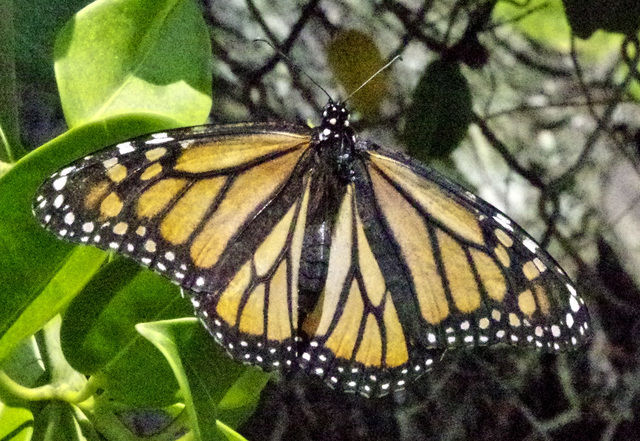Kauai is home to more than 5,000 species of native insects and many of those are pollinators, with an integral part to play in the balance of some of Hawaii’s oldest ecosystems. Many of these insects are endemic to Kauai,
Kauai is home to more than 5,000 species of native insects and many of those are pollinators, with an integral part to play in the balance of some of Hawaii’s oldest ecosystems.
Many of these insects are endemic to Kauai, and many of the species they pollinate are endangered.
The relationship between pollinators and plants is sometimes specialized down to one particular species, creating codependency between blossoms and bugs.
One example is moth-pollinated flowers, which are generally white in color and more fragrant during the moth’s nocturnal hours, according to William Haines, research entomologist with the University of Hawaii and the Department of Land and Natural Resources, Division of Forestry and Wildlife.
Moth-pollinated flowers “also tend to have their nectar at the bottom of a long tube, because moths have a long proboscis that they drink the nectar with,” Haines said. “This forces the moth to stick their proboscis all the way into the flower, so their furry faces come into contact with the pollen-producing parts.”
The pollen is transferred to those fuzzy moth faces, then deposited into the next flower it visits.
“Other types of plants have flowers geared towards the behavior and anatomy of bees, birds or other insects,” Haines said.
Plants are pollinated either by wind or by insect, he explained, and most of the plants in Hawaii rely on insects to do the job.
Native pollinators include honeycreepers, moths, butterflies, solitary bees and flies — as well as beetles and other small insects. Non-native pollinators include insects like honeybees, carpenter bees, hover flies, and many types of moths and butterflies.
Non-native pollinators take on the same job as the native pollinators, but many times they go about extracting nectar from flowers in different ways, so sometimes they’re not as effective when it comes to pollinating.
“For instance, carpenter bees will sometimes ‘rob’ nectar by snipping through the base of a flower and sipping the nectar without going into the tube of the flower,” Haines said. “When they do this, they take the nectar without coming into contact with the pollen of the flower.”
Because of honeybee pests — pathogens and invasive plants and animals — populations of many pollinators in Hawaii, particularly the native species, are on the decline.
“On a worldwide scale, humans depend on pollinators for food production, especially in large industrial agriculture where crops are grown at high densities,” Haines said. “It’s important to conserve a diversity of pollinators, not just honeybees, since different crops are adapted to different types of pollinators.”
What can be done
Targeting invasive species and protecting native habitat are two of the most important ways to help boost the pollinator populations.
“Residents can also help conserve native pollinators by using native plant species in landscaping whenever possible,” Haines said. “This not only provides native flowers for the pollinators to visit, but also host plants for caterpillars or larvae to live on.”
DLNR is currently working to protect and re-introduce some native pollinators including the Kamehameha butterfly to sites on Oahu, by planting its host plant, mamaki.
“In agricultural areas, pollinators can be conserved by planting nectar plants around crops and limiting the amount of pesticides applied, spraying only when necessary,” Haines said. “Next habitats can also be provided for solitary bees, such as leaf-cutter bees or carpenter bees.”
About a year ago, a group of scientists, farmers, conservationists and representatives from agribusiness nationwide joined together to form the Monarch Collaborative, a group that is focused on developing strategies to promote monarch growth.
Syngenta and Monsanto are both part of the Monarch Collaborative.
Syngenta also has its own program, Operation Pollinator, which is a 15-year-old global program that helps create essential habitats for pollinators.
“Through Operation Pollinator, Syngenta is trying to boost the planting of additional pollinator forage and habitat in ag landscapes and on golf courses, both important on Kauai,” said Beth Tokioka, Syngenta spokeswoman.
Tokioka said Operation Pollinator dovetails with Syngenta’s cover crop efforts in Hawaii, which are focused on growing a variety of cover crop species such as sunn hemp, oats, sunflower and peas.
“Our biodiversity efforts are trying to help all of the pollinators — monarch butterflies and other species, honey bees and native bees,” Tokioka said. “Quite simply, the Earth is losing biodiversity and habitats for pollinating birds and insects that are crucial to food production. We feel it’s our duty to help.”


